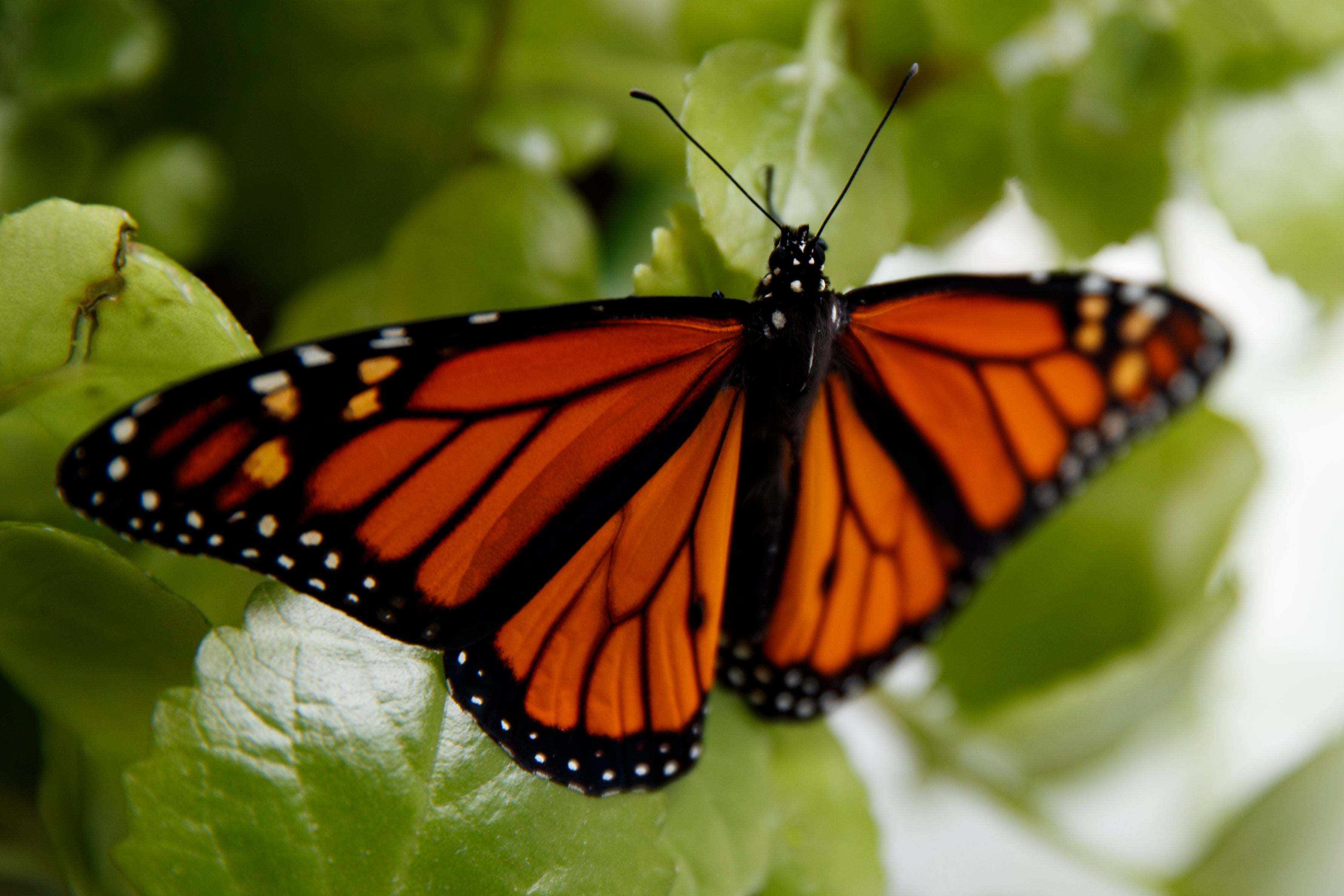Trump administration halts protection for threatened monarch butterfly ‘on brink of collapse’
Scientists estimate the monarch population in the eastern states has fallen about 80 per cent since the mid-1990s

The distinctive black-and-orange monarch butterfly has had its protected status under the Endangered Species Act delayed by several years, despite its numbers being on “the brink of collapse”.
US Fish and Wildlife Service (USFWS) will consider the butterfly, a “candidate” for designation as threatened or endangered, officials told the AP on Tuesday. But other species have taken priority.
The monarch’s status will be reviewed annually, said USFWS. Emergency action could be taken earlier, but plans now call for proposing to list the monarch in 2024 unless its situation improves enough to make the step unnecessary.
The proposal would be followed by another year for public comment and development of a final rule, meaning it will be halfway through the decade before it receives endangered status.
Paige Howorth, director of invertebrate care and conservation at San Diego Zoo Global, told CBS that this important species in America’s natural history was “on the brink of collapse”.
Scientists estimate the monarch population in the eastern states has fallen about 80 per cent in the past three decades, while the drop-off in the western US has been much more dire.
Since 2014, when environmental groups petitioned to list the monarch, school groups, garden clubs, government agencies and others around the nation have restored about 5.6 million acres (nearly 2.3 million hectares) of milkweed plants on which monarchs depend, said Charlie Wooley, head of the agency's Great Lakes regional office.
They lay eggs on the leaves, which caterpillars eat, while adults gather nectar from the flowers.
The volunteer effort “has been phenomenal to see," Mr Wooley said. “It has made a difference in the long-term survival of monarchs and helped other pollinators that are potentially in trouble.”
But advocacy groups say it has compensated for only a small fraction of the estimated 165 million acres (67 million hectares) of monarch habitat — an area the size of Texas — lost in the past 20 years to development or herbicide applications in cropland.
“Monarchs are too important for us to just plant flowers on roadsides and hope for the best,” said Tierra Curry, a senior scientist at the Center for Biological Diversity. “They need the comprehensive protection that comes only from the Endangered Species Act, which would save them and so many other beleaguered pollinators that share their habitat.”
The monarch's plight is part of what the United Nations describes as a worldwide crisis threatening 1 million species — one of every eight on the planet — with extinction because of climate change, development and pollution.
Even so, the Trump administration has listed only 25 species — fewer than any since the act took effect in 1973. The Obama administration added 360.
Mr Trump's team also has weakened protections for endangered and threatened species in its push for deregulation. Among other changes, it limited consideration of the climate crisis's effects on animals when evaluating whether they should be protected.
Global heating is one of the biggest dangers to the monarch. It contributes to lengthening droughts and worsening storms that kill many during their annual migration.
The Great Lakes office, which is handling the monarch case, is considering nine others with higher priority status.
They include the little brown bat, the plains spotted skunk, the Illinois chorus frog, the golden-winged warbler, Blanding's turtle, the Mammoth Springs crayfish, two freshwater mussels and a plant called Hall's bulrush.
The AP contributed to this report



Bookmark popover
Removed from bookmarks